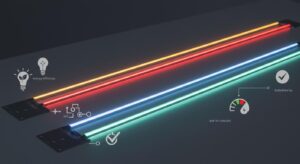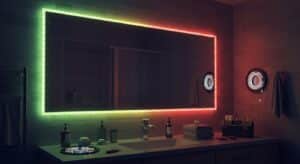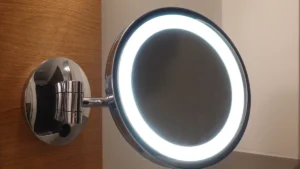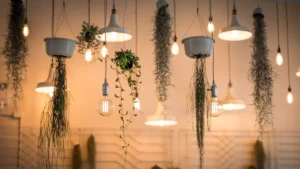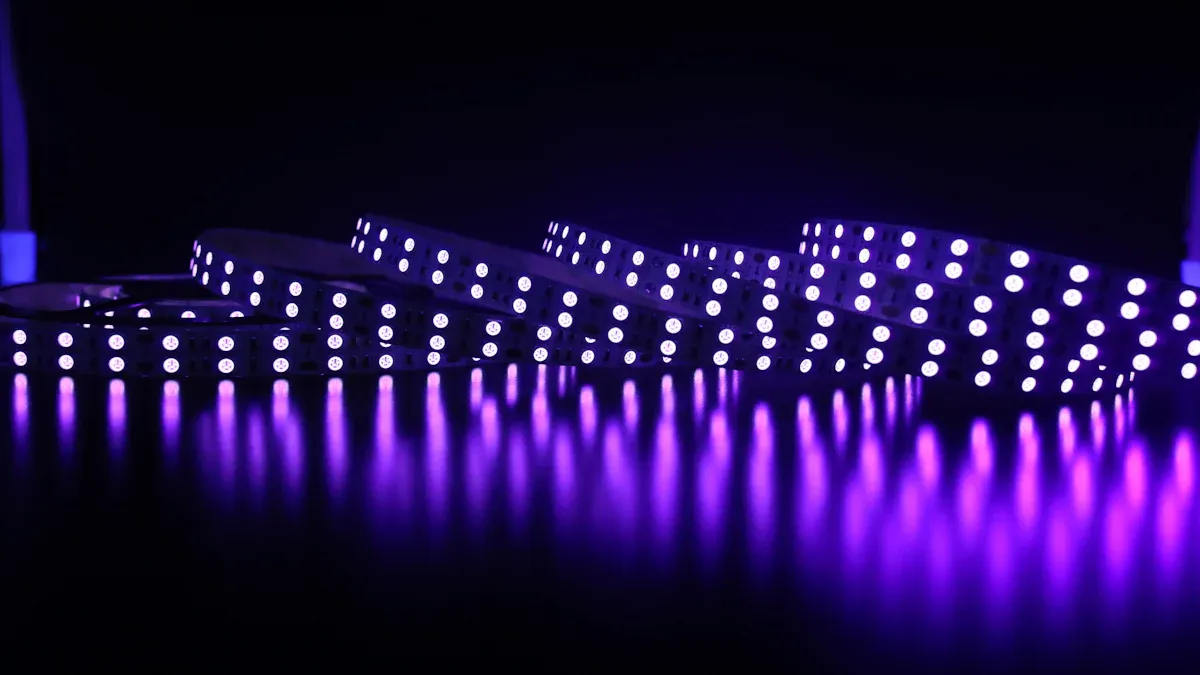
Choosing the right side light neon strip can change your space. It can make it feel cozy or add bright colors. The right neon light strip really matters. These strips are popular in theaters, clubs, and homes. They come in many colors and brightness levels. They give steady light, which improves how places look. This is true for both indoor and outdoor areas. So, let’s look at what you should think about when choosing the best neon strip for you!
Key Takeaways
Think about how bright the neon strips are. Different rooms need different brightness for good lighting.
Pick the right color temperature to create the mood. Warm colors make a cozy feel, while cool colors help you focus.
Look at waterproof ratings if you want to use them outside. Higher IP ratings mean they last longer against water and dust.
Measure your space carefully before you install. This helps make sure it fits well and avoids problems.
Set a budget and check prices. Look for sales and read reviews to find good neon strips without spending too much.
Brightness of Side Light Neon Strips
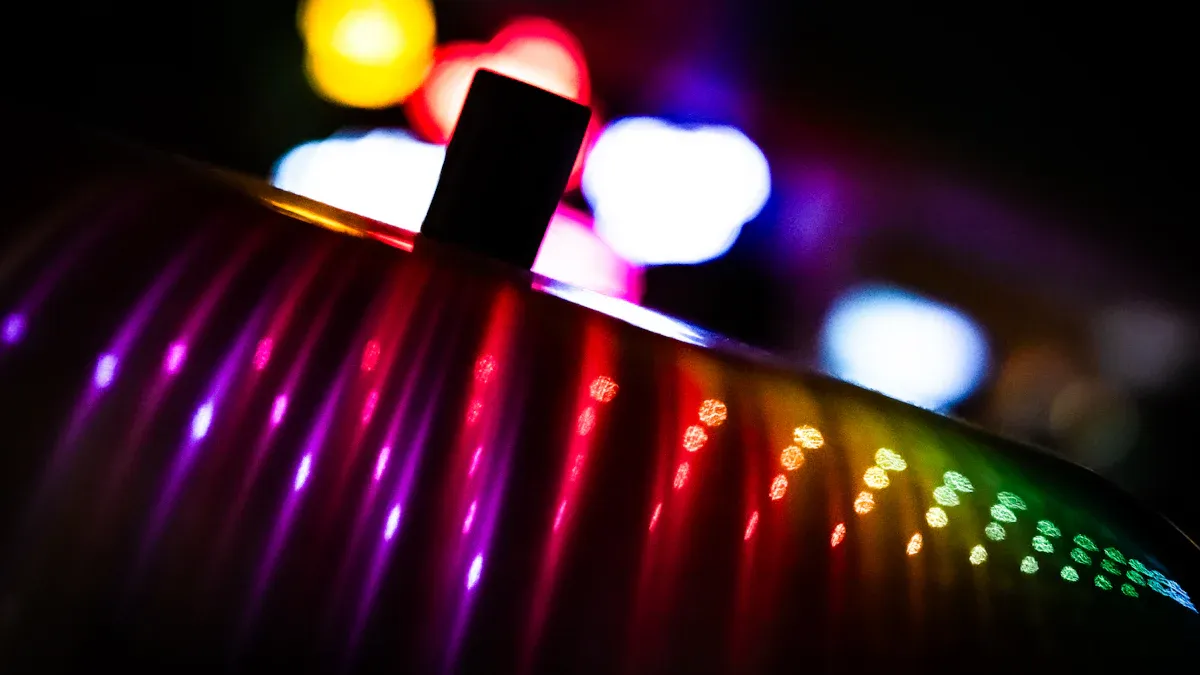
Importance of Lumens
When you think about lights, lumens are very important. They show how much light comes from a source. More lumens mean a neon light strip is brighter. But it’s not only about how much light is made; it’s also about how that light spreads in your space. For example, if you want a certain brightness, you must think about both the total lumens and how well the light is spread.
Tip: To get a certain lux level (which shows light strength on a surface), you must spread the lumens correctly. For example, to reach 500 lux in a 10-square-meter area, you need about 5,000 lumens. This balance is very important for good lighting in any room.
Choosing the Right Brightness Level
Picking the right brightness for your neon light strip can change how your space feels. Different parts of your home or business need different lighting. Here’s a helpful table to show you the best brightness levels for different room types:
Room Type | Recommended Brightness (Lumens) |
|---|---|
Living rooms general | 500 |
Kitchen general | 375 |
Kitchen working areas | 750 |
Casual reading | 750 |
Study | 750 |
Bedroom general | 375 |
Dining rooms | 500 |
Bathrooms | 500 |
Halls and landings | 250 |
Stairs | 250 |
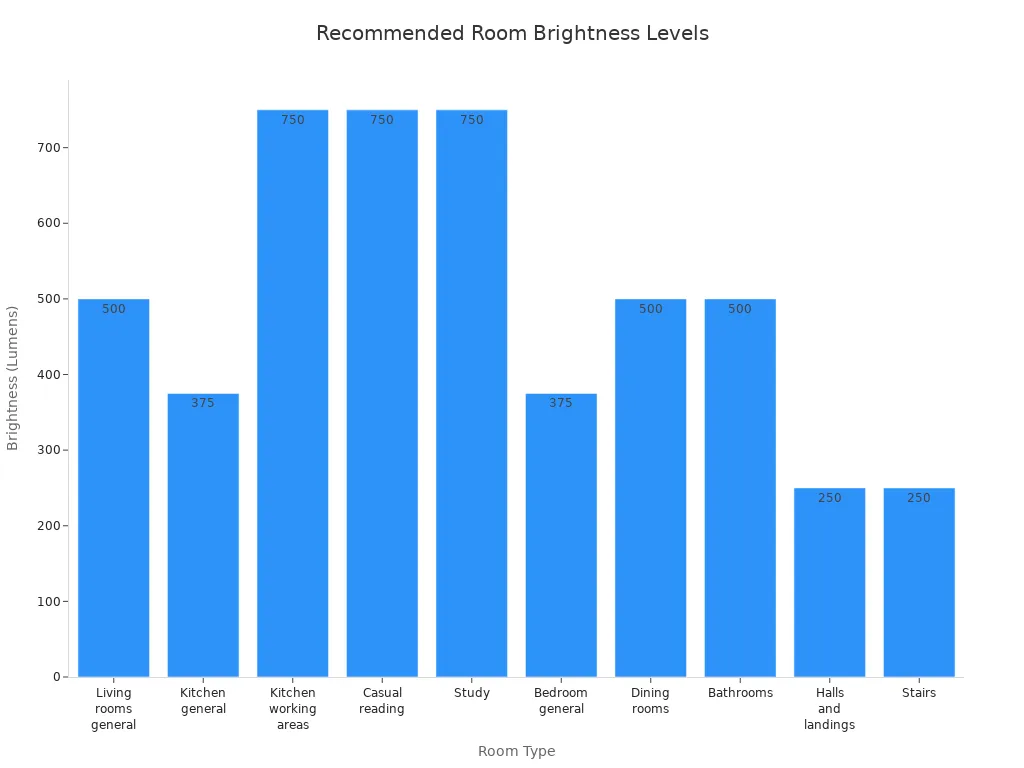
Too much brightness can hurt your eyes, while too little can make it hard to see. LED neon strips are great because they meet basic lighting needs and use less energy. You can change the brightness for different situations, making it more comfortable and easier on your eyes, especially at night. Plus, these strips give even light, avoiding harsh shadows that can be annoying.
Color Options for LED Neon Strips
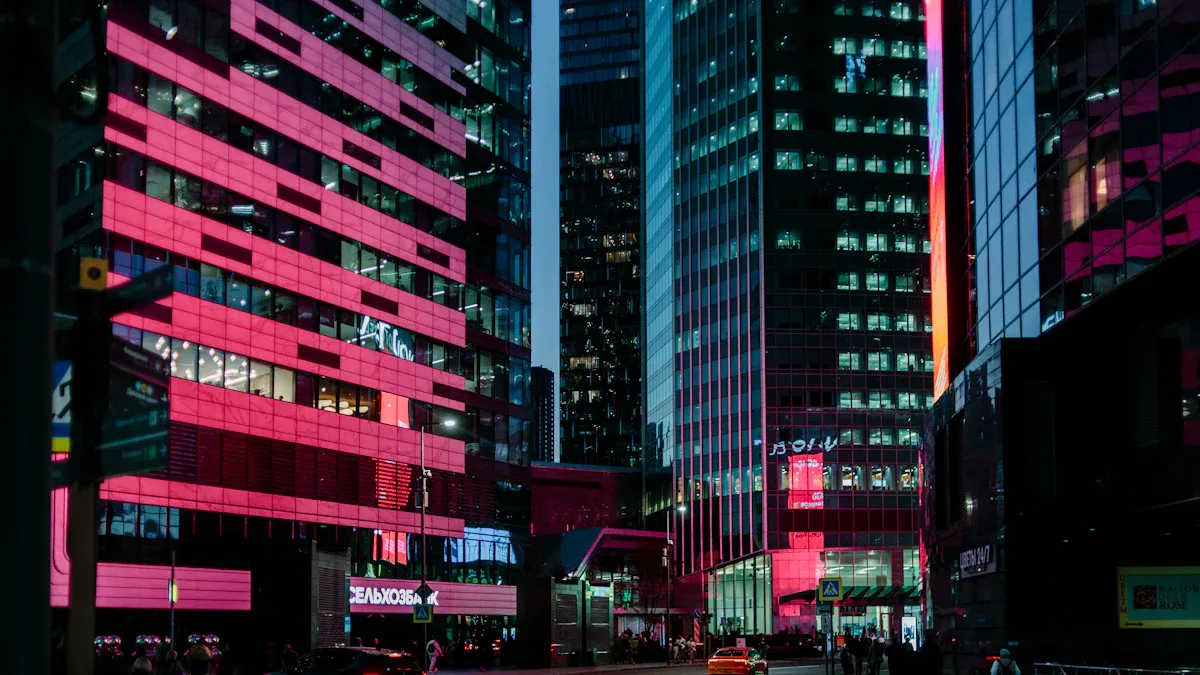
Color Temperature Explained
Color temperature is important for how you feel in a room. It is measured in Kelvin (K) and changes the mood of your space. Lower temperatures, like 2000K to 3000K, give a warm white light. This makes a cozy and welcoming feeling, great for living rooms and bedrooms. Higher temperatures, like 4600K to 6500K, create a bright daylight effect. This light helps you focus, making it perfect for offices and stores.
Here’s a quick look at how different color temperatures can change mood and use:
Color Temperature Range | Description | Mood/Functionality |
|---|---|---|
2000K – 3000K | Warm white | Cozy, calm, inviting atmosphere, ideal for living rooms and bedrooms. |
3100K – 4500K | Cool white | Neutral, crisp light, suitable for kitchens and task lighting. |
4600K – 6500K | Daylight | Bright, vibrant light, enhances concentration, ideal for offices and retail spaces. |
Popular Color Choices
When picking a neon light strip, there are many color options. You can choose different colors to fit your style and mood. Here are some popular color choices for LED neon strips:
Color Option | Description | Common Uses |
|---|---|---|
Warm White | Creates a warm and comfortable atmosphere. | Home living rooms, dining rooms |
Neutral White | Clear and bright, suitable for high brightness areas. | Kitchens, bathrooms |
Cool White | Bluish-white tone, makes spaces look open and bright. | Modern commercial spaces |
RGB | Offers 16.7 million color options, controllable via apps. | Studios, entertainment venues |
RGBW | Adds a dedicated white diode for natural tones alongside vibrant hues. | High-end hotels, art exhibition halls |
Lighting experts say that the color you choose for LED strip lights can change the feel of your space. For example, warm white tones make a cozy place, while cool white is best for work areas. Plus, dynamic RGB options let you have bright and customizable lighting, improving the mood and overall feel of a room.
Choosing the right color for your neon LED strip lights can change your space. Whether you want a relaxing vibe or a lively atmosphere, the right color will make a big difference.
Waterproofing Features of Neon Light Strips
Why Waterproofing Matters
When you pick a neon light strip, think about its waterproofing. Waterproofing is very important to protect your lights. This is especially true if you want to use them outside or in wet places. If the lights are not waterproof, water can damage them. This can cause short circuits or make them last less time. You want your neon light strip to shine for many years, right? So, find options that can handle different weather.
Types of Waterproof Ratings
Waterproof ratings, called IP ratings, show how well a neon light strip can resist water and dust. Here’s a quick look at common IP ratings and where they work best:
IP Rating | Description | Best Suited For |
|---|---|---|
IP65 | Protects against dust and water jets | General outdoor use, like patios or garden paths |
IP67 | Can be underwater up to 1 meter for a short time | Areas near pools, fountains, or heavy water exposure |
IP68 | Good for underwater use or heavy rain | Underwater use or places with heavy rain |
For example, if you want to put your neon light strip by a pool, an IP67 rating is best. It can handle splashes and short times in water. But if you need something for underwater use, choose an IP68-rated strip. These waterproof LED neon strips are made to last in tough conditions, like moisture, dust, and UV light. This makes them more durable and longer-lasting.
On the other hand, lower-rated options like IP20 to IP65 are not as strong. They are mainly for indoor use or covered outdoor areas. Choosing a neon light strip with high waterproof ratings helps you get a product that lasts, even in tough places.
Dimensions and Bendability of LED Neon Strip Lights
Measuring Your Space
Before you install your neon light strip, measuring your space is crucial. You want to ensure a perfect fit. Here’s how to do it:
Measure the Space: Grab a measuring tape and find the exact length of the area where you plan to install the lights. Many LED neon strips can be cut at specific intervals, so don’t stress if your space is slightly longer than the strip you bought.
Even Placement: Use a level or laser level to keep the strip aligned straight along the surface. If the strip isn’t placed correctly, it may not look aesthetically pleasing.
Taking these steps will help you avoid any surprises during installation.
Flexibility for Design
One of the best features of LED neon strips is their flexibility. This quality opens up a world of design possibilities. Here’s why flexible neon strips are a great choice:
Moldable Shapes: You can easily bend LED neon flex into various shapes. This means you can create unique designs that fit your style.
Cut and Join: If you need to make complex applications, you can cut and join the strips as needed. This adaptability allows you to customize your lighting.
Bend Radius: These strips can bend freely in both horizontal and vertical directions. They have a bend radius of just 2 inches, making them perfect for intricate designs.
Here’s a quick look at the standard dimensions available for LED neon strips:
Type | Width Range |
|---|---|
Single Row | 3mm to 15mm |
Multi Row | Up to 120mm |
Wider strips can accommodate more LEDs, leading to increased brightness and better heat dissipation. On the other hand, narrow strips work well in limited spaces. So, whether you’re lighting up a cozy nook or designing a bold statement piece, there’s a neon light strip that fits your needs.
Installation Tips for Neon Light Strips
DIY vs. Professional Installation
When you want to install your neon light strip, you have two main choices: do it yourself or hire someone. Each choice has good and bad points.
If you choose to do it yourself, you can save money and feel proud of your work. But, you might run into some problems. For example, keeping the same distance and angle can be hard. This can cause uneven lighting. You might also have issues with the adhesive not sticking well, which can make the strips sag or not line up right. Here’s a quick look at some common problems you might face:
Challenge | DIY Installation Issues | Professional Installation Advantages |
|---|---|---|
Exposed LED Strips | Often happens from not handling and placing them right | Usually handled well by experts |
Uniform Distance and Angle | Hard to keep, causing bright spots in lighting | Experts make sure everything is even |
Adhesive Failure | Common problem that makes strips droop or not align | Experts use strong adhesives and good methods |
Complexity of Wiring | Can be tough for DIYers, especially with tricky systems | Experts know how to manage complex wiring easily |
On the other hand, hiring a professional can save you time and make sure the installation is perfect. They know how to handle tricky wiring and can avoid the common mistakes that DIYers often make.
Tools and Materials Needed
If you decide to install the neon light strip yourself, you’ll need some important tools and materials. Here’s a helpful list to get you started:
Tools needed:
Screwdriver set
Wire strippers
Wire nuts
Voltage tester
Drill with bits
Ladder or step stool
Pliers
Fish tape or wire snake
Materials:
LED Bulbs or Fixtures
Electrical tape
Wire connectors
Junction box
Wire
Mounting brackets or tracks
Safety Equipment:
Safety glasses
Work gloves
Non-contact voltage tester
Having the right tools and materials will help your installation go smoothly and safely. So, whether you do it yourself or hire a pro, you’ll be ready to light up your space with those bright LED neon strips!
Voltage Choices for LED Neon Strip Lights
Understanding Voltage Requirements
When you pick LED neon lights, voltage is very important. Different voltage options can change how well they work and how safe they are. Here’s a quick look at common voltage choices:
Voltage Option | Advantages | Considerations |
|---|---|---|
12V | – Safe to handle, cheap, flexible, can be dimmed | – Voltage drop over long distances, power limits |
24V | – Brighter light, longer runs, uses power well | – Higher cost, limited compatibility, safety needs |
5V | – Good for low-power uses | – Specific situations only |
48V | – Very bright for commercial use | – Needs special power supplies and skills |
Choosing the right voltage helps your neon strip lights work well and last longer. For example, 12V strips are great for homes because they are safe and easy to use. But if you need brighter lights for a bigger area, think about 24V options. Just keep in mind that higher voltage can mean higher costs and special installation needs.
Safety Considerations
Safety is very important when working with any electrical system. Here are some tips to remember:
Always check if the voltage matches your power supply.
Use the right connectors and wiring to avoid short circuits.
Make sure your installation follows local electrical rules.
When adding your LED neon lights to smart home systems, think about what control system you will use. Constant current LED strips are best for bigger projects. They give steady brightness and good performance. On the other hand, constant voltage LED strips are easier to install and cheaper, making them great for smaller setups.
By knowing these voltage choices and safety tips, you can confidently choose the right LED neon strip lights for your space.
Setting a Budget for Colorful Neon LED Strip Lights
When you want to buy colorful neon LED strip lights, making a budget is important. You want to get good quality without spending too much. Here are some key cost factors to think about:
Cost Factors to Consider
Selection of LED Chips: The kind of chips you pick can change the price a lot. Chips made in America are usually more expensive than those from other countries.
LED Strip Light Color: Some colors cost more because they are harder to make. For example, bright colors often have a higher price than regular ones.
LED Welding: How the strips are put together matters too. Manual welding usually costs more than machine welding, but it can also affect how good the strip is.
Chips Used in LED Strips: Where the chips come from, like the US or Japan, can change the price.
LED Chip Package: Choosing between resin and silicone packaging affects cost. Silicone costs more but helps with heat better.
Consistency of LED Color: Different brands may have differences in color, which can change the price.
Encapsulation of LED: Choosing between resin and silicone affects both cost and how well they work, with silicone being the more expensive choice.
Knowing these factors helps you make smart choices when buying your neon lights.
Finding Affordable Options
Now that you know what affects the price, let’s see how to find good options that don’t cost too much. Here are some tips to help you save money while still getting quality products:
Compare Prices: Always check different stores. Prices can be very different, so take time to look around.
Look for Sales and Discounts: Watch for seasonal sales or special deals. You might find great prices on popular brands.
Consider Bundles: Sometimes, buying in bulk or as part of a kit can save you money. Look for packages that have everything you need for installation.
Read Reviews: Check what other customers say to make sure you’re getting a good product. Sometimes, cheaper options can be unreliable, so it’s worth doing your homework.
Explore Lesser-Known Brands: While popular brands are often reliable, don’t ignore lesser-known brands that offer good prices and quality.
Here’s a quick look at some average prices for high-quality neon LED strip lights:
Product Description | Price |
|---|---|
Philips Hue Indoor 10 Ft Smart RGBWW LED Solo Lightstrip Base Kit | $60.00 |
DAYBETTER LED Strip Lights 100ft, Smart Lighting with App Remote Control | $12.99 |
KSIPZE 100ft Led Strip Lights RGB Music Sync Color Changing | $9.99 |
DAYBETTER LED Strip Lights 130ft | $9.99 |
Govee RGBIC LED Strip Lights, Smart LED Lights for Bedroom | $14.99 |
Leeleberd Led Lights for Bedroom 100 ft | $9.99 |
DAYBETTER LED Strip Lights 200 ft | $17.99 |
Govee 100ft RGBIC LED Strip Lights | $72.99 |
Govee White LED Strip Lights, Upgraded 16.4ft Dimmable LED Light Strip | $19.99 |
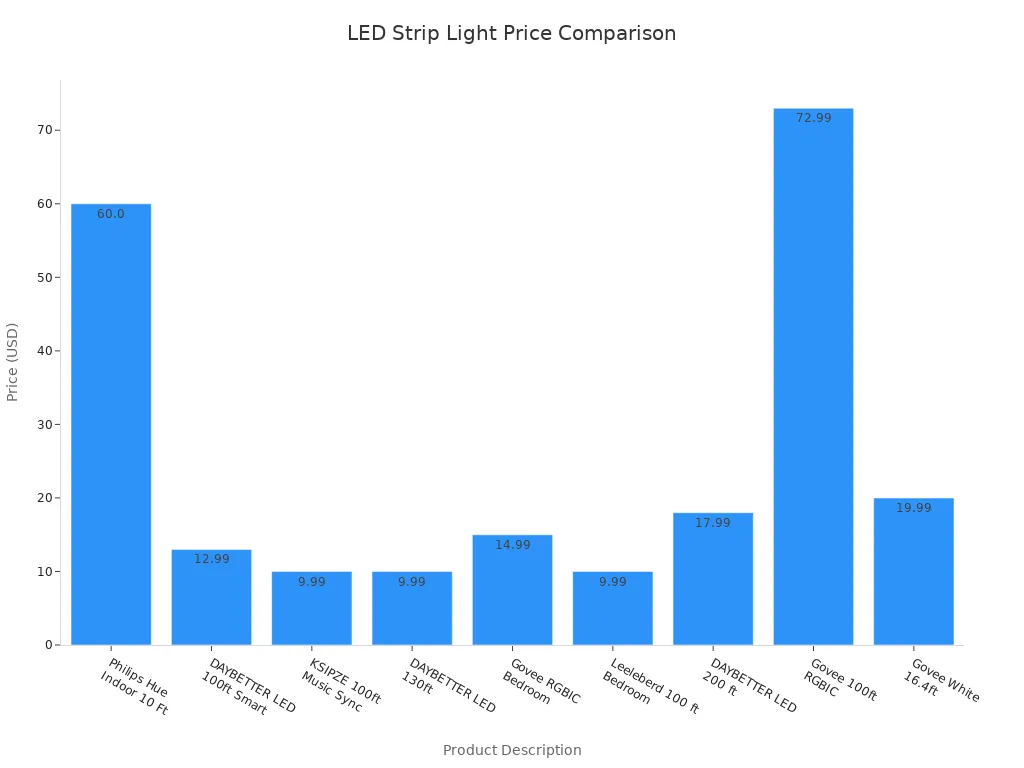
By keeping these tips in mind, you can find colorful neon LED strip lights that fit your budget without losing quality. Whether you want waterproof LED neon strips or RGB LED neon flex, there are many options to brighten up your space.
Choosing the right side light neon strip can really change your space. Think about things like brightness, color choices, and waterproof ratings. Each of these parts is important for your choice. Take your time to think about what you need and like. Whether you want bright colors or energy-saving options, there are many choices.
Here’s a quick summary of what to remember:
Installation methods are important for easy use.
Brightness and color options let you customize.
Durability and efficiency help with long-term happiness.
Waterproof ratings are key for outdoor use.
Specific application needs help you make your final choice.
Spending time to pick the best side light neon strip will be worth it later. Enjoy the process and let your creativity shine!
FAQ
What is the difference between RGB and RGBW LED neon flex?
RGB LED neon flex shows many colors but does not have true white light. On the other hand, RGBW LED neon flex has a special white diode. This gives you bright colors and natural white light, making it better for different places.
Can I use neon strips for both indoor and outdoor lighting?
Yes! Many neon strips work for both indoor and outdoor lighting. Just make sure to pick waterproof options with the right IP ratings for outdoor use. This will help them last and work well in different weather.
How do I customize my LED neon flex?
You can customize your LED neon flex by cutting it to fit your space or using connectors to join different strips. This lets you create unique designs that fit your style and lighting needs.
How do I install LED neon strips safely?
To install LED neon strips safely, always follow the instructions from the manufacturer. Use the right tools, check the voltage compatibility, and secure all connections. If you are unsure, think about hiring a professional for a safe and effective installation.
What are the benefits of using LED neon strips?
LED neon strips are energy-efficient, long-lasting, and flexible. They offer customizable lighting options, improve the atmosphere, and can be used in many places, from home decor to businesses, ensuring great performance.
